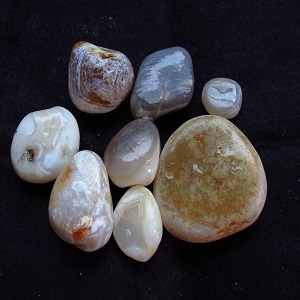What is andesine? and its uses in jewelry
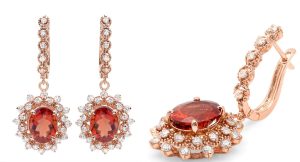
Andesine labradorite was first observed in 2003 and is therefore considered a relatively new gemstone
This stone is usually found in orange-red colors with green and yellow veins
What makes this stone different from other gemstones is the metallic luster and faint luster known as labradorescence
The rainbow mode allows a wide range of colors to occur in labradorite according to the viewing angle
This stone is still relatively unknown to many people, and many disputes have arisen over its origin
The problem with labradorite andesine was that it was initially traded without proper color representation
Luster and clarity in andesine-labradorite
Andesine-labradorite has a glassy to opaque luster. It often has visible and acceptable imperfections, but these imperfections are not as glamorous as sunstone. Labradorite andesine crystals are usually acicular rutile. Andesine-labradorite has a slight labradorite, which gives it a metallic luster or luster. Most andesine-labradorite rocks are clear to translucent, but some cloudy varieties are also found
Andesine-labradorite is often reddish-yellow with green and yellow streaks. Colors vary from red to honey red, yellow to orange and from amber to champagne or green. Andesine-Labradorite also has a metallic luster when viewed from different angles. The iridescent luster is comparable to labradorite. Through lattice dispersion, yellow labradorite changes to red andesine-labradorite
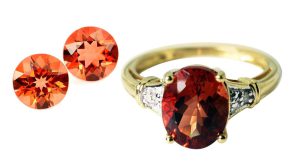
Introducing the characteristics of andesine stone
The origin of the gemstone was also very mysterious when it was first introduced to the public
This gem was first bought and sold under the name “Andesine”, at this time this stone was found in the Andes mountains of South America
After its introduction to the international jewelry market, it was found that “andesine” was not actually “andesine”. After the discovery of the chemical composition and origin of andesine, the name “andesine” seemed to be very misleading
In order to solve this problem, “Andesine” was later renamed “Andesine Labradorite”
The trade name was widely accepted, but it was often known simply as “andesine”, as well as “red labradorite”, “Congo sunstone”, and the generic term “red feldspar“
Andesine-Labradorite belongs to the feldspar group of minerals, which is considered the richest group of minerals on earth. Feldspars make up approximately 60% of the earth’s crust and can be recognized by the presence of aluminum and silica ions, including aluminum silicates, sodium oxide, potassium oxide, and calcium oxide
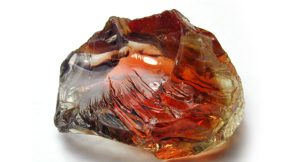
The two main branches of feldspar are plagioclase feldspar (labradorite and sunstone) and potassium feldspar, which includes orthoclase and microcline. Plagioclase gemstones have similar hardness grades and relatively high refractive indices, between beryl and quartz, and they are all a mixture of albite and aneurite. Andesine is composed of 50-70% albite (a sodium aluminum silicate) and 30-50% anorthite (a calcium aluminum silicate), and labradorite is composed of 50-70% aneurite and 30-50% albite. Since the two materials differ in proportions, one can see why andesine-labradorite is confusing. Plagioclase feldspars have a similar appearance and can often be grouped into andesine and labradorite subgroups
A few gemstones appear to have similarities to andesine-labradorite, but andesine-labradorite can be distinguished by simple observation. Andesine-Labradorite is sometimes bought and sold under the name “argan sunstone” because sunstone usually has a higher carat value. “Rainbow Moonstone” is a type of Labradorite that is known by various brand names such as “Rainbow Blue Moonstone”, “Blushin Labradorite”. But all of these refer to Andesine-Labradorite-related gemstones and have nothing to do with Moonstone
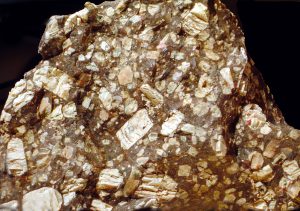
What is the cut and shape of Andesine-Labradorite
Andesine-Labradorite is found in various shapes and cuts. Often it is chiseled instead of cut. Unworked labradorites are almost always cut into wedges. These settings allow better transparency and color in the stone, which will be more visible through the chisel cut. Most andesine-labradorite rocks are cut into oval shapes. Because these gemstones are less well known, fancy shapes such as marquises, cushions, trillions, pears, and baguettes are harder to find due to limited demand
The most famous rocks associated with andesine
Moonstone, rainbow moonstone, labradorite, sunstone and organ sunstone are among the most famous related varieties
Sources and origin of Andesine gem
The origin of Andesine-Labradorite is unclear and has been the cause of many discussions. In the early 2000s, Andosine-Labradorite was believed to have been first discovered in the Congo, and was later found in China, Mongolia, Tibet, and then South India. Andesine silicate minerals were actually discovered in the Andes Mountains of Ecuador, and labradorite, which is a silicate, was first discovered in Labrador, Canada. Since andesine-labradorite has a similar chemical composition to both, its origin could be the Andes mountains of South America and Canada. However, the true position of the labradorite from there to the Andesine-Labradorite is still unclear
Color types of Andosin-Labradorite
Andesine-labradorite is often reddish-yellow with green and yellow streaks. Colors vary from ruby red to honey red, yellow to orange and from amber to champagne or green. Andesine-Labradorite also has a metallic luster when viewed from different angles. The iridescent luster is comparable to labradorite. Through lattice dispersion, yellow labradorite changes to red andesine-labradorite
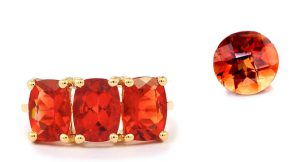
What is the diagnosis of labradorite andesine
The chemical structure of labradorite andesine is a combination of labradorite and andesine (albite and aneurite). Although andesine and labradorite have similar chemical compositions, each is defined differently. The diagnosis of andesine-labradorite requires experiments to confirm the composition ratio. Andesine-Labradorite is usually distinguished from other gemstones with similar characteristics by a slight iridescence effect that results in a metallic luster. Andesine-Labradorite does not have shiny, metallic inclusions like sunstone, but instead usually contains needle-like inclusions of rutile. Unlike many rhinestones, metallic colors are only visible through luster. Andesine-labradorite is easily distinguished from labradorite by its lighter colors. Natural labradorite is usually dull, dark, and smoky gray, while andesine-labradorite is more red and orange in color

